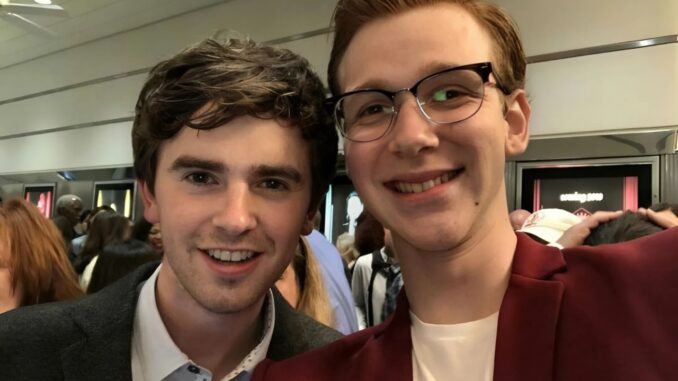
Highmore’s approach to empathy in his portrayal is multifaceted. Firstly, he tackles the inherent challenge of conveying emotion for a character who struggles with typical social cues and emotional expression. Shaun often doesn’t display emotions in ways that neurotypical individuals might expect: a happy moment might be marked by a slight widening of the eyes rather than a broad smile, or deep distress by a quiet retreat rather than an outward display of tears. Highmore meticulously calibrates these subtle physical and vocal manifestations to convey Shaun’s internal state. This requires immense control and a deep understanding of the character’s neurological makeup, preventing the portrayal from becoming either exaggerated or emotionless. He makes every small gesture count, every specific cadence of speech deliver a wealth of information about Shaun’s inner world, making the audience work to understand him, which in turn deepens their empathetic connection.
Secondly, Highmore’s performance excels at illustrating the “double empathy problem,” a concept in autism research suggesting that breakdowns in communication are often mutual, stemming from a lack of understanding on both sides, rather than solely from the autistic individual’s deficits. Highmore consistently shows Shaun’s frustration when others misunderstand him, or his confusion when he misinterprets neurotypical social norms. By allowing the audience to witness these moments from Shaun’s perspective, whether it’s his literal interpretation of sarcasm or his struggle to read facial expressions, Highmore compels viewers to question their own assumptions about communication and social interaction. This invites a critical self-reflection, pushing the audience to adjust their own “empathetic lens” to better understand Shaun, rather than expecting Shaun to simply conform. This active engagement from the viewer is central to the masterclass in empathy that Highmore delivers.

Moreover, the power of Highmore’s portrayal lies in his ability to humanize Shaun’s struggles and triumphs. Shaun’s journey is not always easy; he faces skepticism, discrimination, and personal heartbreak. Highmore portrays these challenges with raw honesty, making Shaun’s frustrations palpable and his small victories profoundly moving. When Shaun finally grasps a complex social concept, or experiences a breakthrough in his personal relationships, Highmore allows these moments to resonate with authentic joy or relief. These are not merely plot points; they are milestones in Shaun’s personal growth, and Highmore ensures that the audience feels every step of that journey alongside him. This relatability transcends the diagnosis, connecting viewers to the universal human experience of learning, growing, and striving for connection.
Beyond individual moments, Highmore also masterfully portrays the unique way Shaun processes information and forms connections. Shaun’s extraordinary visual memory and logical reasoning are depicted not just as abilities, but as integral parts of his identity that inform his unique way of showing affection or problem-solving. For instance, his acts of care might be expressed through precise medical diagnoses or logical solutions to personal problems, rather than conventional emotional support. Highmore ensures these expressions of empathy, though unconventional, are recognized as genuine and deeply felt. This teaches the audience that empathy can manifest in diverse forms, broadening their understanding of what connection truly looks like.
Furthermore, Highmore’s sustained performance over multiple seasons showcases the evolution of empathy itself – both Shaun’s and the audience’s. As Shaun grows, he learns to navigate social situations more effectively, developing coping mechanisms and slowly building an understanding of neurotypical social nuances. Highmore subtly integrates this learning process into his performance, demonstrating Shaun’s progress without erasing his core identity. Simultaneously, the audience’s empathy for Shaun deepens with each episode, moving beyond initial curiosity to a profound appreciation for his unique perspective and unwavering integrity. This iterative process of growth, both for the character and the audience, exemplifies the true depth of Highmore’s empathetic artistry.
In conclusion, Freddie Highmore’s performance as Dr. Shaun Murphy is a tour de force in “The Art of Empathy.” He has not only created a character who is a powerful advocate for autism awareness but has also provided a blueprint for how to portray complexity with dignity and profound understanding. Through his meticulous attention to detail, his ability to convey internal states through subtle external cues, his challenge to audience assumptions, and his humanization of both struggles and triumphs, Highmore has delivered a masterclass. He compels viewers to look beyond superficial differences, to engage actively in understanding, and ultimately, to embrace a broader, more inclusive definition of human connection. His work in “The Good Doctor” is a testament to how exceptional acting can not only entertain but also educate and profoundly expand our capacity for empathy in an increasingly diverse world.
